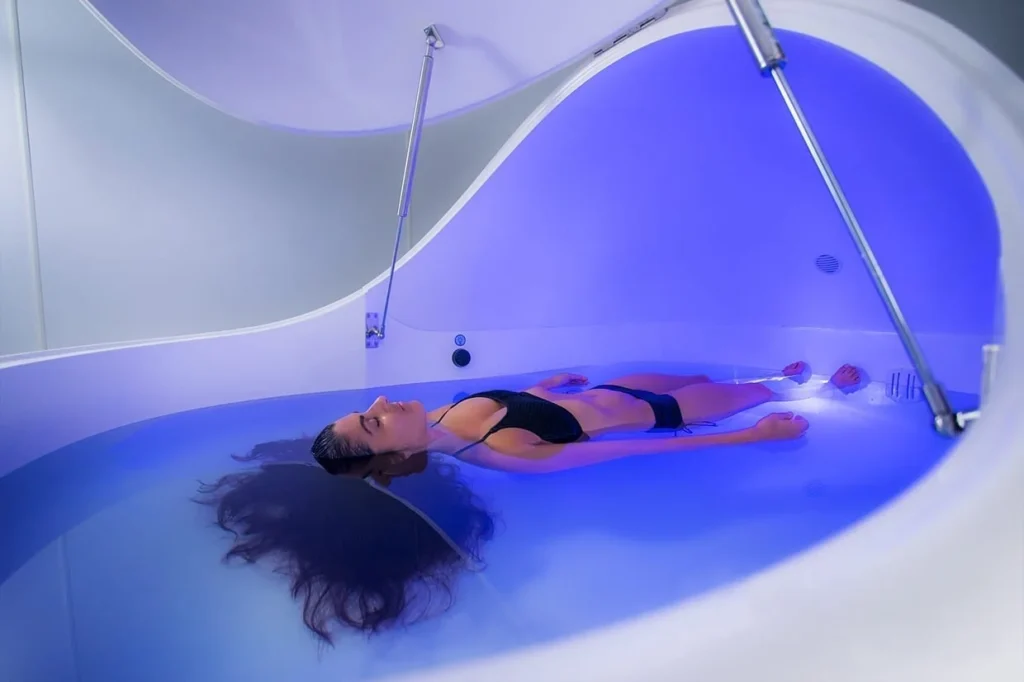
In today’s fast-paced world, stress, anxiety, and fatigue have become almost inevitable companions in our daily lives. People are constantly looking for ways to unwind, recharge, and reconnect with their bodies and minds. One of the fastest-growing wellness trends is Float Therapy Services, which offers a unique way to achieve deep relaxation, mental clarity, and physical rejuvenation. But what exactly is float therapy, and how does it work? In this comprehensive guide, we’ll explore everything you need to know about this innovative wellness service.
What is Float Therapy?
Float therapy, also known as sensory deprivation therapy or flotation therapy, is a wellness practice where individuals float in a specialized tank filled with water and Epsom salt. The solution is designed to make the body buoyant, allowing users to effortlessly float on the surface. The water is maintained at skin temperature, and the environment is typically quiet and dimly lit or completely dark. This unique setup removes almost all external stimuli, including light, sound, and gravity, giving the user a deep sense of relaxation and weightlessness.
The practice originated in the 1950s, developed by neuroscientist John C. Lilly. Today, Float Therapy Services are offered in spas, wellness centers, and dedicated float centers worldwide, appealing to anyone seeking mental clarity, stress relief, or physical recovery.
How Does Float Therapy Work?
The primary goal of float therapy is to create a sensory-reduced environment that promotes relaxation and mental rejuvenation. Here’s a breakdown of how it works:
1. Sensory Reduction
When you float in the tank, external stimuli such as sound, light, and touch are minimized. This sensory reduction helps calm the nervous system, allowing your mind and body to enter a deep state of relaxation. The brain can focus on internal awareness, which often results in reduced stress and enhanced mental clarity.
2. Weightlessness and Muscle Relief
The Epsom salt solution provides natural buoyancy, making your body feel weightless. This relieves pressure on joints and muscles, allowing for muscle recovery, pain relief, and increased mobility. Athletes, in particular, have found Float Therapy Services beneficial for reducing muscle soreness and speeding up recovery.
3. Stress Hormone Reduction
Floating has been shown to lower cortisol levels, the hormone associated with stress. Regular float therapy sessions can help regulate stress responses, improve mood, and enhance overall well-being.
4. Enhanced Meditation and Mindfulness
Without external distractions, the mind can enter a meditative state more easily. Many people report that float therapy enhances their mindfulness, creativity, and problem-solving abilities.
5. Skin and Detox Benefits
The high concentration of Epsom salt (magnesium sulfate) in float tanks can improve skin health and help detoxify the body. Magnesium absorption through the skin can promote relaxation, improve sleep quality, and reduce inflammation.
Benefits of Float Therapy Services
Float Therapy Services offer a wide range of benefits, making it a popular choice for both physical and mental wellness. Here are some of the key advantages:
- Stress Reduction: Float therapy reduces sensory overload, lowers cortisol levels, and promotes deep relaxation.
- Pain Relief: Floating alleviates muscle tension, joint pain, and chronic pain conditions like fibromyalgia.
- Enhanced Sleep: Regular float sessions can improve sleep quality by reducing stress and promoting relaxation.
- Mental Clarity: The sensory deprivation environment allows the mind to reset, enhancing focus and creativity.
- Athletic Recovery: Athletes use float therapy to reduce muscle soreness and speed up recovery after intense training.
- Improved Mood: Floating encourages the release of endorphins, which can improve overall mood and reduce symptoms of anxiety and depression.
- Detoxification: Magnesium-rich Epsom salt can support skin health and detoxify the body.
What to Expect During a Float Therapy Session
For newcomers, a typical float therapy session can seem unusual, but it’s a relaxing experience. Here’s a step-by-step overview:
- Arrival: Most centers provide a quiet space to change clothes and store personal items.
- Shower: Before entering the float tank, you rinse off to remove oils and impurities from your skin.
- Floating: Enter the tank, lie back, and float effortlessly. Sessions typically last 60–90 minutes.
- Relaxation: You can choose complete darkness or soft lighting, and most tanks allow for optional music.
- Post-Session: After floating, a shower is recommended to rinse off the Epsom salt. Many people feel refreshed, calm, and rejuvenated.
How Often Should You Float?
The frequency of float therapy sessions depends on your personal goals. Beginners may benefit from one session per week, while regular users often schedule two to three sessions weekly for optimal results. Many centers offering Float Therapy Services provide membership or package options for frequent floaters.
Who Can Benefit From Float Therapy?
Float therapy is suitable for most adults and offers benefits across various groups:
- Professionals: Reduce work-related stress and enhance focus.
- Athletes: Aid muscle recovery and improve performance.
- People with Chronic Pain: Alleviate symptoms of arthritis, fibromyalgia, and back pain.
- Mental Health Seekers: Reduce anxiety, improve mood, and enhance mindfulness.
- Anyone Looking for Relaxation: Simply enjoy a break from the pressures of daily life.
Safety Considerations
Float therapy is generally safe for most people. However, individuals with certain medical conditions, such as severe skin conditions, uncontrolled epilepsy, or open wounds, should consult a doctor before trying float therapy. Pregnant women should also seek medical advice before using a float tank.
FAQs About Float Therapy Services
1. How Long is a Float Therapy Session?
Most sessions last between 60–90 minutes. Beginners may start with a shorter session to get accustomed to the experience.
2. Is Float Therapy Safe?
Yes, for most adults, float therapy is safe. It is non-invasive and drug-free. Consult a doctor if you have medical concerns.
3. What Does it Feel Like to Float?
Floating feels like complete weightlessness. Many describe it as deeply relaxing, similar to meditation, with a sense of detachment from physical stress.
4. Can Float Therapy Help With Anxiety?
Yes. Float therapy reduces cortisol levels, alleviates stress, and can significantly improve mood and relaxation.
5. Do I Need to Bring Anything?
Most centers provide towels, robes, and shower facilities. You may bring earplugs if desired, though they are usually provided.
6. How Often Should I Float?
For stress relief or relaxation, one session per week may be sufficient. Athletes or chronic pain sufferers may benefit from multiple sessions weekly.
7. Can Children Try Float Therapy?
Most centers recommend float therapy for adults due to safety and comfort considerations. Some offer specialized sessions for teenagers with supervision.
8. Will I Feel Dizzy or Uncomfortable?
The water is designed to keep you buoyant, and most people feel calm and relaxed. Beginners may experience mild adjustment to weightlessness, which usually resolves quickly.
9. How Do I Choose a Float Center?
Look for certified and reputable centers offering clean tanks, proper hygiene, and trained staff. Float Therapy Services with positive reviews are often a reliable choice.
10. Can Float Therapy Help With Sleep?
Absolutely. Many users report improved sleep quality after float therapy due to reduced stress and relaxation of the nervous system.
Conclusion
Float Therapy Services are revolutionizing the way people approach mental and physical wellness. From reducing stress and alleviating chronic pain to enhancing mindfulness and sleep quality, the benefits are wide-ranging. By offering a unique sensory-reduced environment, float therapy helps the body and mind achieve a state of deep relaxation and rejuvenation. Whether you’re an athlete, a professional under constant stress, or someone seeking a new wellness practice, float therapy offers a safe, effective, and enjoyable solution.
Investing in regular float sessions can dramatically improve your overall well-being, making it a worthwhile addition to any wellness routine. If you haven’t experienced a float session yet, now is the perfect time to discover the transformative power of Float Therapy Services.

